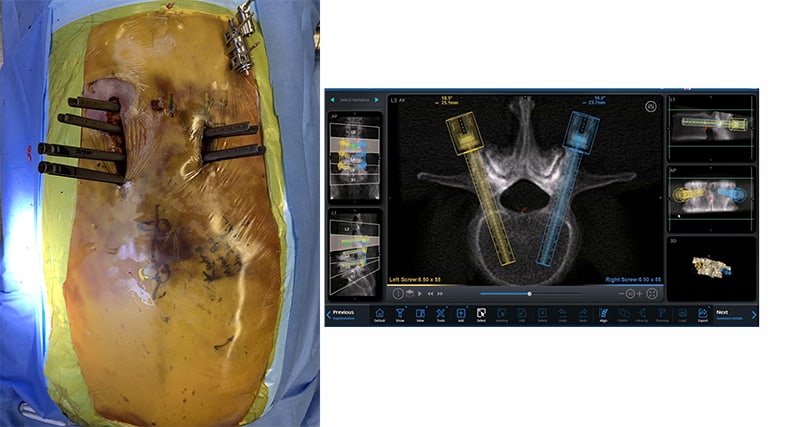Minimally Invasive Spine Surgery
Minimally invasive spine surgery is an alternative to traditional open spine surgery. The goal of minimally invasive spine surgery is to cause less harm to surrounding muscle, ligament, and tissue in order to achieve the same objective. In many cases, this may lead to less blood loss, less postoperative pain, and a faster recovery. There are some pathologies that are amenable to a minimally invasive approach. With the mindset that surgery is a last resort, Dr. Jun Kim may offer a minimally invasive approach.
Which Spinal Procedures Can Be Performed Minimally Invasively?
Dr. Kim tailors the surgery to the patient’s pathology. In some cases, you may be a good candidate for minimally invasive spine surgery. The following procedures are some of the surgeries that Dr. Kim performs minimally invasively:
In cases where you may need a fusion, it is often imperative that we achieve good bony fixation to hold your bones in place as they heal and fuse. Many spine surgeons will use pedicle screw instrumentation for this purpose. Originally, pedicle screw placement was first described using fluoroscopic guidance. As surgeons developed a better understanding of the spinal anatomy, Kim et al. described a freehand pedicle screw placement technique using anatomic landmarks. This allowed for faster screw placement while drastically reducing the amount of radiation exposure for both the patient and surgeon. The latest iteration of pedicle screw placement techniques has been based on navigation using fluoroscopy (xray) and CT scans, and robotic technology has been developed to increase accuracy during pedicle screw placement. The use of navigation allows for screw placement without relying on anatomy, which becomes critical in revision or tumor cases, where the native anatomy can be significantly altered – or with minimally invasive cases, where exposure and visualization may be limited.
Many academic studies illustrate that computer navigated, minimally invasive screw placement is safe and accurate, similar to previous fluoroscopic (X-ray) and freehand techniques. Cadaveric studies show that screw placement does in fact match the planned preoperative template, allowing surgeons to make specific operative plans and maximize screw length and width before the case. Studies show no significant difference in adverse outcome or complication between open versus minimally invasive surgery.

Fig 1. Left side shows a typical computer navigation set up. A small incision is made to percutaneously place pedicle screws and allow Dr. Kim to perform a posterior spinal fusion and/or decompression.